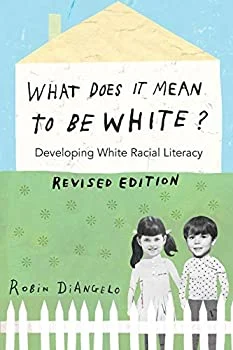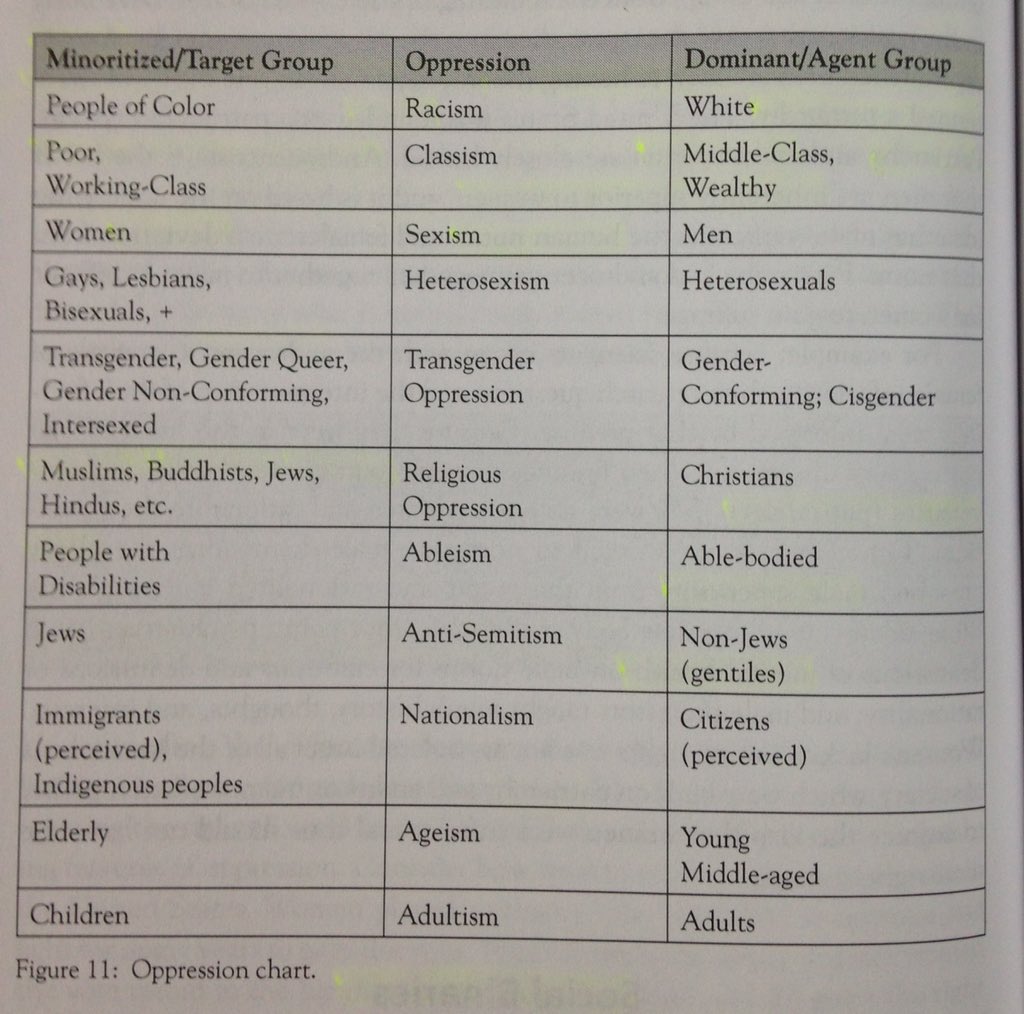
Robin DiAngelo is the best-selling author of White Fragility and Is Everyone Really Equal? Her book What Does It Mean to Be White? is a less well-known work touching on the same themes that suffuse her writing: race, racism, white supremacy, socialization, and antiracism. In fact, particular sentences and even entire paragraphs have appear to have been borrowed from her other books and peer-reviewed publications (or perhaps the other way around, since some of her books have gone through more than one edition). Regardless, reading this final book made it clear that many core ideas drawn from critical race theory reappear throughout DiAngelo’s corpus. I’ll collect a few representative quotes under the appropriate headings, but examples could be multiplied; the book perseverates on these core themes for over three hundred pages.
Racism Is A System
To critical race theorists, racism is not primarily an expression of individual racial animus. Instead, it is a system that creates and perpetuates racial disparities. Racism is description of power dynamics between Whites (the oppressor group) and people of color (the oppressed group). Consequently, racism flows only in one direction: from Whites towards people of color.
“so-called ‘reverse racism’ or ‘reverse sexism’ do not exist, because racism and sexism refer to power relations that are historic, embedded, and pervasive” (p. 66)
“Racism: A form of oppression in which one racial group dominates others. In the United States the dominant group is white, therefore racism is white racial and cultural prejudice and discrimination” (p. 108)
“From an antiracist perspective, when I say that only whites can be racist, I mean that in the United States only whites have collective social and institutional power and privilege over people of color” (p. 109).
“1. Racism is a complex and multidimensional system in which we are all immersed. This system is reinforced both within us (in terms of our socialization) and outside of us (in terms of institutions). 2. This system is not our fault, and I do not see whites as bad people. But I do see us as responsible for changing this system from which we unfairly benefit. Institutionalized racism is the societal default; to not act against it is to collude with it.” (p. 213)
All Whites Are Socialized Into Racism
Like the word “racism,” the word “Whiteness” is also redefined. It refers not to a person’s skin color, but to an ideology of racial superiority into which all White people are socialized. Whiteness warps White perceptions. Whiteness warps White identities. Whiteness warps White culture. Worst of all, Whiteness makes it difficult for Whites to see white privilege.
“I did not see the world objectively as I had been raised to believe, nor did I share the same reality with everyone around me. I was not looking through a pair of objective eyes, I was looking out through a pair of white eyes” (p. 2)
“Whiteness: A term to capture all of the dynamics that go into being defined and/or perceived as white and that create and reinforce white people as inherently superior through society’s norms, traditions, and institutions. Whiteness grants material and psychological advantages (white privileges) that are often invisible and taken for granted by whites” (p. 103)
“White is an identity of false superiority… In order to construct this [perfect] world [unpolluted by blacks], blacks must be separated and held away through State violence, but still must exist, for the existence of blacks provides the needed Other against which whites rise. Thus white identity depends on the oppression of blacks.” (p. 123)
“Colorblind Racism: Pretending that we don’t notice race or that race has no meaning. This pretense denies racism and thus holds it in place.” (p. 130)
“People of color are wise not to give us [whites] the benefit of the doubt and make themselves vulnerable to our unaware racism.” (p. 203)
Racism Is Pervasive
Because racism is a system, Whites cannot protest that they don’t harbor racist thoughts or attitudes. They are socialized into, and complicit in, our nation’s racist system whether or not they consciously reject it. Racism is the water we all swim in. We can no more avoid it than a fish can avoid being wet.
“Racism and our involvement in it cannot be avoided, and that is not our fault. We did not chose to be born into a culture in which racism was embedded, nor did we choose to be socialized into entitlement and superiority… But racism is real and we are involved in it, so we must take responsibility and work against it. Guilt and responsibility are not the same thing. The best antidote to guilt is accountability and corrective action.” (p. 224)
“racism is the norm rather than the aberration.” (p. 252)
“it is not possible for your parents to have taught you not to be racist, or for your parents to have been free of racism themselves. This is not possible because racism is a social system embedded in our culture and its institutions.” (p. 265)
“From an antiracist perspective, the question is not, ‘Did racism take place’ but ‘How was racism taking place’ because the assumption is that racism is always at play, always operating.” (p. 330)
“Remember: The question is not ‘Is racism taking place?” but rather “How is racism taking place in this specific context?’” (p. 336)
Whites Are Blinded By Their Social Location
White racist socialization leads to their racial ignorance. Their white privilege is invisible to them. They don’t know they live in a racist nation. They don’t know they are racist. Therefore, they should defer to the lived experience people of color, whose social location gives them the ability to understand racism in a way Whites do not.
“We have a deep interest in denying forms of oppression which benefit us… Our racial position (whether we are white, a person of color, or multi-racial) will greatly affect our ability to see racism” (p. 23)
“The dominant paradigm of racism as discreet, individual, intentional, and malicious acts makes it unlikely that whites will see or understand this problem.” (p. 194)
“Because of white social, economic, and political power within a white supremacist culture, whites are in the position to legitimize people of color’s assertions of racism. Yet whites are the least likely to see, understand, or be invested in validating those assertions and being honest about their consequences. This leads white to claim that they disagree with perspectives that challenge their worldview when, in fact, they don’t understand the perspective–thus confusing not understanding with not agreeing.” (p. 205-206)
“Sometimes I am asked, ‘But what if the person of color is wrong and what they thinks [sic] is racism isn’t racism at all?’ To this I say that people of color are much more qualified than we are to make this determination. My not being able to see racism is unrelated to its reality.” (p. 334)
Racism Is Part of Interlocking Systems of Oppression
Although What Does It Mean to Be White? focuses on racism, DiAngelo believes that racism is just one of many interlocking systems of oppression. Although she elaborates on her broader view of oppression in much greater detail in Is Everyone Really Equal?, she does mention it here:
“These groups [e.g. men, women, able-bodied, disabled, LGBTQ, heterosexual, etc.] matter, but not naturally as we are often taught to believe. They matter because the socially constructed meaning ascribed to these groups create a difference in lived experience” (p. 36)

“once I was in academia, I understood that a college degree is not conferred upon those who are smarter or who try harder than others. It comes through a complex web of intersecting systems of privilege.” (p. 218)
Summary
Despite the fact that her own website says that she engages in “critical racial and social justice education,” DiAngelo has denied that she is a “critical race theorist.” Semantics aside, it is undeniable that DiAngelo is heavily influenced by and explicitly teaches the ideas of critical race theory, which are present in and undergird all her books.
See all content on critical theory here.
Related articles: